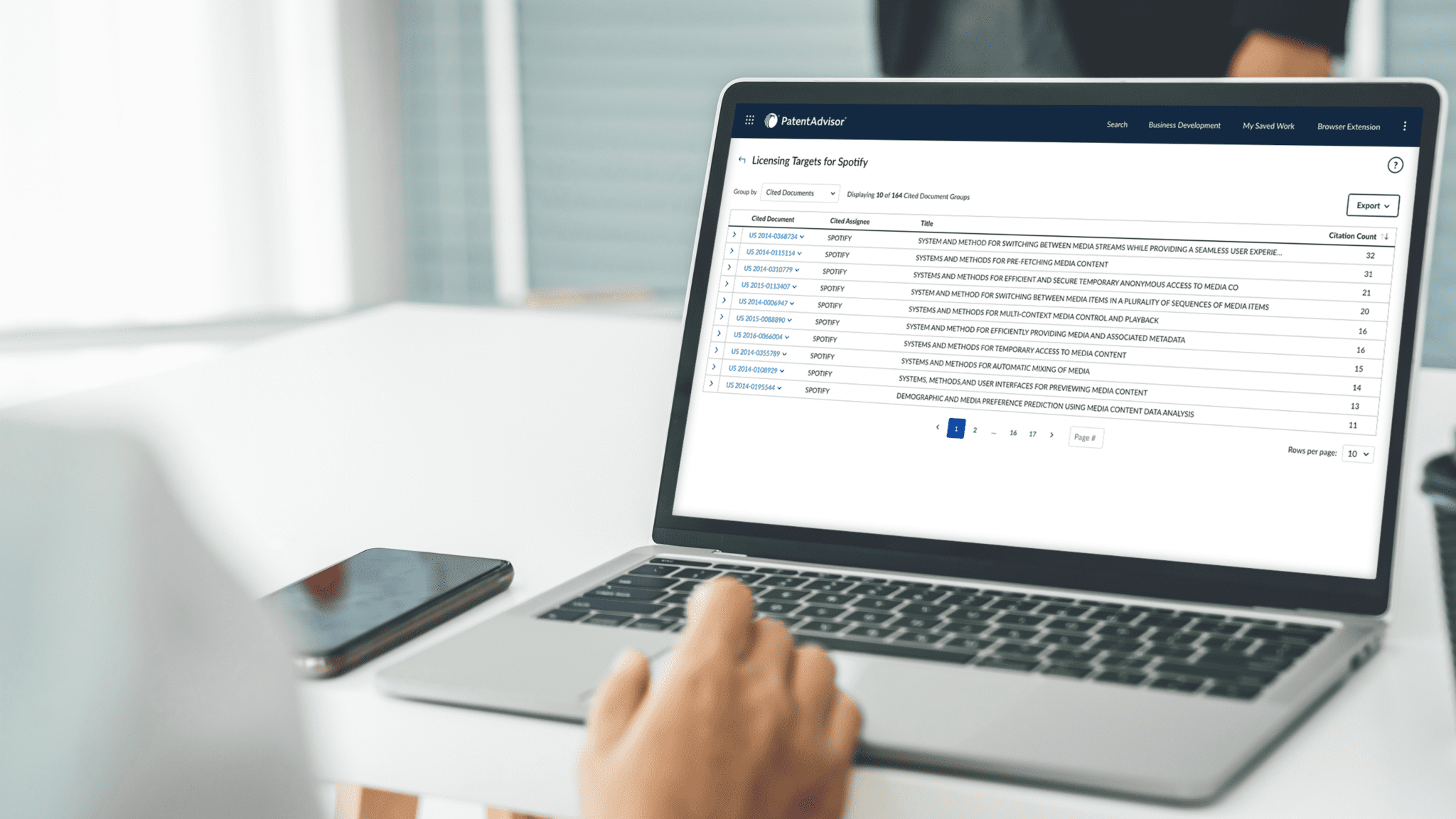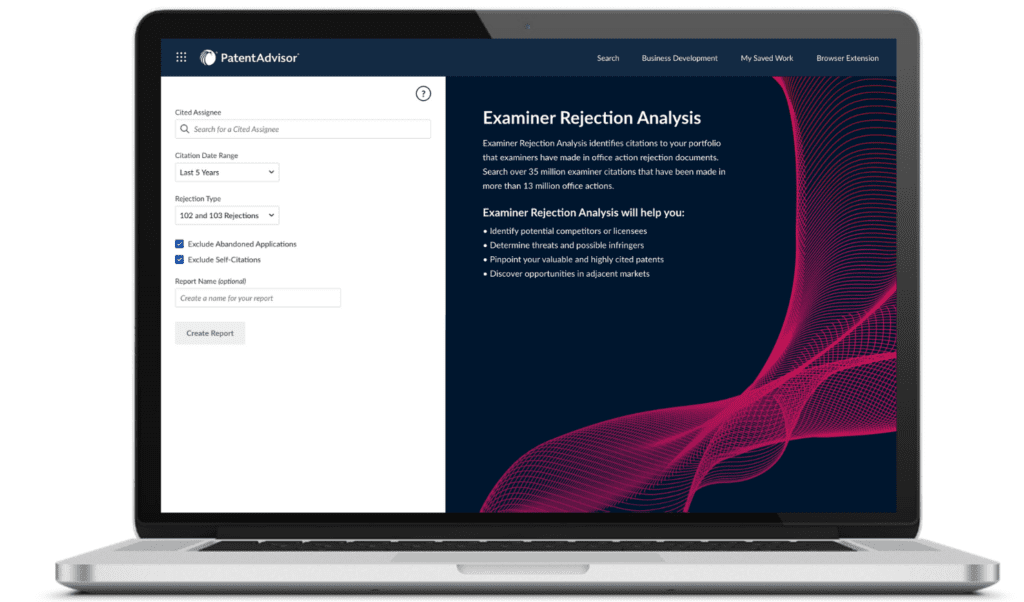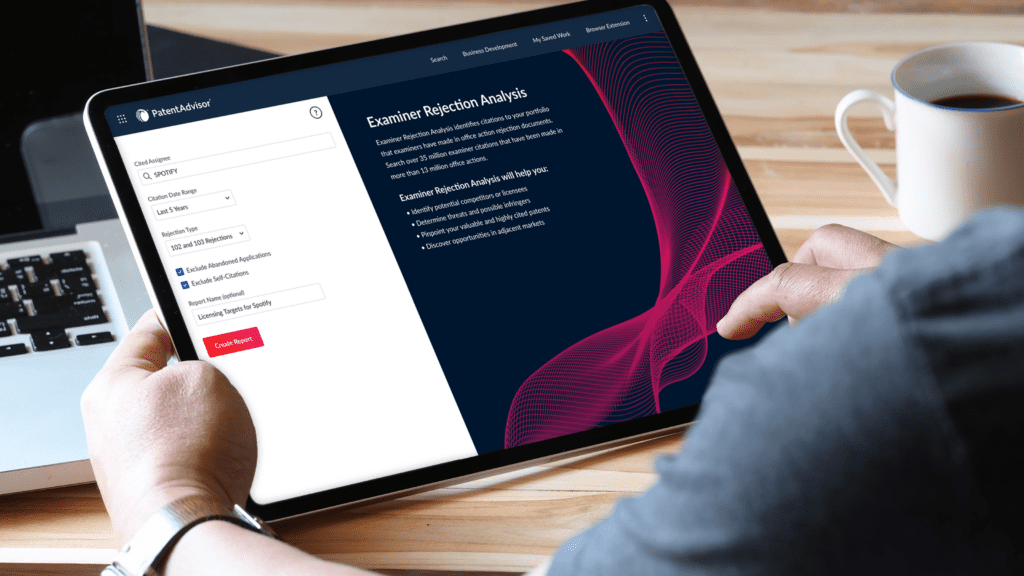How USPTO Examiner Rejection Data Can Enhance Your Patent Monetization Strategy

In today’s world, where intangible assets account for 90% of the S&P market value, demonstrating the importance of intellectual property (IP) has become a key priority for businesses. Yet, IP professionals face a range of challenges when managing large portfolios of patents including tight deadlines and resources. From finding the right strategic partners to patent monetization, portfolio management can be one of the most demanding aspects of an IP professional’s day-to-day work.
Especially, data collection alone can be daunting when applications are still being processed by the US Patent and Trademark Office (USPTO). Our latest citation analytics feature, built on 20+ years of reliable data – LexisNexis PatentAdvisor® Examiner Rejection Analysis, is aimed directly at solving these problems for the innovation community.
The significance of examiner citation data and difficulties in procuring it
Examiner citations are references cited by a patent examiner to existing patents during the prosecution of a patent application. By analyzing examiner citations received for the patents in a portfolio, IP professionals can gain insights into the technical landscape surrounding a particular invention or technology and identify potential competitors, infringers, and research partners. More importantly, examiner citations can help identify potential patent monetization opportunities by highlighting companies interested in licensing the technology covered by the cited patent.
There are currently minimal options for conducting citation analysis, most of which are time-consuming or require a certain level of expertise and resource investment. One approach is to wait for a granted patent to get the citation information from the face of the patent. However, this is a painstakingly slow process that can take up to 29-45 months for the data to be published by the USPTO. Another approach is to search each individual application and read the Office Action documents in full to locate examiner references. This involves hours of research and data collection before the analysis even begins. There’s also the option for users to build a front-end solution from a USPTO API, the Enriched Citation API v2, but this requires a significant investment in time and resources to develop an in-house tool. The only commercially available options currently in the market do not do anything more than supply the raw data, which still requires further analysis to extract meaningful insights.
Reliable citation analytics now make patent monetization easier than ever
Insights derived from 102 and 103 rejection data, also known as examiner citation data, can help IP professionals spot potential partners, competitors, and infringers early on, even while their patent applications are being prosecuted at the USPTO. This data can even help them uncover new business areas to enter and reveal competitors’ intent to commercialize.
While most publicly available sources of this data only provide limited coverage with little to no analytics capabilities; our citation analytics feature, PatentAdvisor Examiner Rejection Analysis, includes 20 years of citation data; this is 13 years more than currently available through the USPTO. With 36.8 million examiner citations indexed, 13 million office actions searched, and 13.6 million 102 rejections found. this dataset is among the most exhaustive available today. Also available are more ways to slice and dice the data in order to find the right insight for your need. Furthermore, our analysis shows that 61% of rejected applications in our database ultimately got granted. This means that the owners of the prior art cited in these granted patents have more opportunities to discover the potential for further research, partnerships, and monetization.

Complex problems require sophisticated solutions
Undeniably, intangible assets, such as IP, are becoming a boardroom issue with acute pressure from all stakeholders on patent attorneys and IP departments to demonstrate their value, monetize their portfolio, and transition from cost centers to profit centers. At the same time, the sheer volume of data and its complications, like inaccuracies and gaps, can make it highly challenging for them to find successful strategies. The urgency makes it crucial for IP professionals to find a solution that helps them stay ahead of the curve by identifying potential licensing opportunities, infringement risks, and new avenues for maximizing their portfolio’s value.
Whether you work at a law firm or a corporation, the powerful insights from our Examiner Rejection Analysis feature can help you enhance the value of the portfolio you manage. Findings from examiner citation data can better your odds of success in licensing negotiations, identify potential infringement risks, and uncover new business opportunities.
Interested to see how it works?
Are you still unsure about finding monetization opportunities in your portfolio? Let one of our expert analysts walk you through the insights in detail and show you a few examples tailored to your portfolio. Schedule an appointment today.

Find patent licensing opportunities based on examiner citation analytics
Proactively identify licensing opportunities, infringement risks, and ways to maximize portfolio value with the new PatentAdvisor™ Examiner Rejection Analysis. Find out how you can leverage the powerful insights derived from 20+ years of 102 and 103 rejection data.
